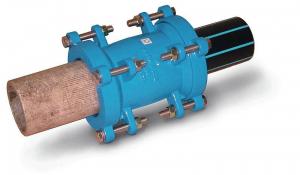Flexible Stainless Steel Tubing
Flexible Stainless Steel Tubing Related Searches
Best Paint For Stainless Steel Blanket Insulation For Steel Buildings Primer For Galvanized Steel Foam Filter For Stainless Steel H S Code For Stainless Steel Surface Grinding Wheels For Stainless Steel Surface Grinding Wheels For Hardened Steel Hole Saw For Stainless Steel Paint For Stainless Steel Stainless Steel For BbqHot Searches
Steel Mesh Panels For Sale Price For Stainless Steel Scrap Scrap Price For Stainless Steel Price For Stainless Steel Stainless Steel Tank For Sale Stainless Steel Sheets For Sale Cheap High Tea Sets For Sale Stainless Steel Tanks For Sale Stainless Steel For Sale High Density Fiberboard For Sale Solar Hot Water Collectors For Sale Scaffolding For Sale In Uae Scaffolding For Sale In Ireland Scaffolding For Sale In Houston Type Of Inverter For Solar Price Of Shipping Containers For Sale Types Of Inverter For Solar Stock Price For Aluminum Used Solar Inverter For Sale Steel Mesh Panels For SaleFlexible Stainless Steel Tubing Supplier & Manufacturer from China
Okorder.com is a professional Flexible Stainless Steel Tubing supplier & manufacturer, offers integrated one-stop services including real-time quoting and online cargo tracking. We are funded by CNBM Group, a Fortune 500 enterprise and the largest Flexible Stainless Steel Tubing firm in China.Hot Products
FAQ
- Advantages and disadvantages of stainless steel
- 1. Chemical properties: resistance to chemical corrosion and electrochemical corrosion resistance in steel is the best, second only to titanium alloy.2, physical properties: high temperature resistant, low temperature resistant and anti cold also.
- Intergranular corrosion in stainless steel sheets can be prevented through various methods such as proper selection of stainless steel grade, heat treatment, and appropriate welding techniques. 1. Stainless Steel Grade Selection: Choosing the right stainless steel grade is crucial in preventing intergranular corrosion. Grades with a low carbon content, such as 304L or 316L, are less susceptible to intergranular corrosion compared to higher carbon grades. These low carbon grades minimize the formation of chromium carbide precipitates, which are the main cause of intergranular corrosion. 2. Heat Treatment: Heat treatment processes like solution annealing and quenching can help eliminate or reduce the formation of chromium carbide precipitates. This treatment restores the stainless steel's corrosion resistance by dissolving existing precipitates and promoting the formation of a protective chromium oxide layer on the surface. 3. Welding Techniques: Careful attention must be given to welding stainless steel sheets to prevent intergranular corrosion. Processes like gas tungsten arc welding (GTAW) or laser welding that provide precise control over heat input are preferred. Additionally, using low carbon filler metals or consumables specifically designed for intergranular corrosion resistance can minimize the risk of corrosion. 4. Post-Weld Cleaning and Passivation: After welding, it is essential to thoroughly clean the welded area to remove any contaminants or oxide scales that could promote corrosion. Acid cleaning followed by passivation helps restore the protective oxide layer and enhances the stainless steel's resistance to intergranular corrosion. 5. Avoiding Sensitization: Sensitization occurs when stainless steel is exposed to high temperatures for extended periods, leading to the formation of chromium carbide precipitates. It is crucial to avoid prolonged exposure to temperatures between 450-850°C (842-1562°F) during fabrication or service to prevent sensitization and subsequent intergranular corrosion. By implementing these preventive measures, intergranular corrosion in stainless steel sheets can be effectively minimized, ensuring the longevity and performance of the material in various applications.
- The different types of stainless steel sheet edges include mill edge, slit edge, deburred edge, rounded edge, and beveled edge.
- Some of the different types of colored finishes available for stainless steel sheets include brushed, mirrored, satin, and antique finishes. Additionally, there are options for powder coating, electroplating, and PVD (physical vapor deposition) coatings that can offer various colors and patterns to enhance the appearance of stainless steel sheets.
- What's the difference between cold rolled plate and stainless steel?
- The biggest difference between the stainless steel plate is the addition of 13% chromium (Cr) elements and even nickel elements (such as the standard 304 stainless steel, chromium containing 18%, nickel containing 9%) during steelmaking, thus having the function of stainless steel
- What kind of welding rod is used for 310S stainless steel?
- A132 welding electrodes are used to weld important corrosion resistant, Ti stabilized 0Cr19Ni10Ti stainless steels.A137 is an Cr19Ni10Nb stainless steel electrode with an alkaline coating and a low carbon content containing Nb stabilizer. It is used for welding important corrosion resistant Ti stabilized stainless steel 0Cr19Ni11Ti.310S stainless steel is austenitic chromium nickel stainless steel, with good oxidation resistance, corrosion resistance, acid and alkali resistance, high temperature resistance. Mainly used in petroleum, electronics, chemical, pharmaceutical, textile, food, machinery, construction, nuclear power, aerospace, military and other industries.
- Stainless steel wire drawing without fingerprints, what principle?
- As for sandblasting, the surface roughness is higher than the wire drawing, and the stainless steel has no gloss (which makes the customer fail to see the stainless steel parts and sometimes lower the grade). Liquid blasting is recommended to achieve relatively better surface treatment results.Commercial kitchen experts completely hand, no copy paste. Please give favorable comments.
- Yes, stainless steel sheets can be used for facade cladding. Stainless steel is a highly durable and corrosion-resistant material, making it an excellent choice for exterior applications such as facade cladding. It offers an attractive and modern aesthetic, with its sleek and reflective surface. Stainless steel sheets are available in various finishes, including brushed, mirror, and patterned, allowing for a wide range of design possibilities. Additionally, stainless steel is easy to maintain, requiring minimal cleaning and upkeep. Overall, stainless steel sheets are a popular and practical option for facade cladding due to their durability, aesthetic appeal, and low maintenance requirements.















































